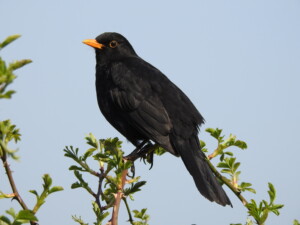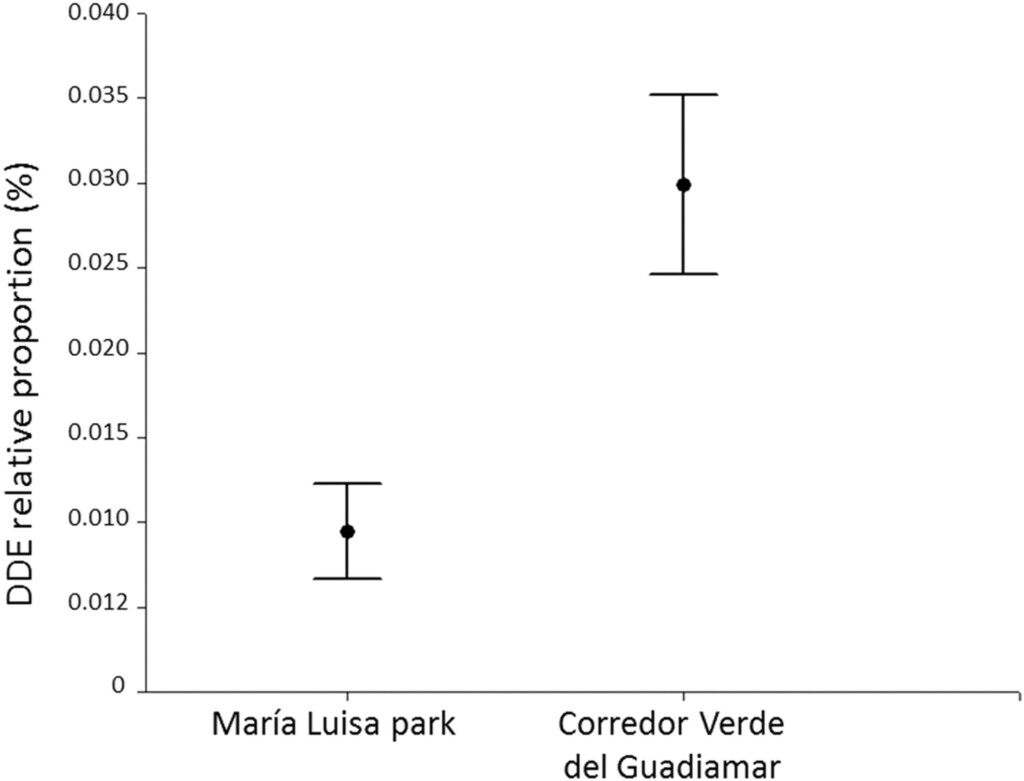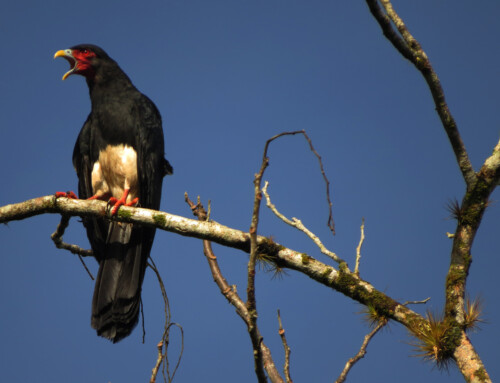
LINKED PAPER
Effects of sex and sampling site on the relative proportion of pesticides in uropygial gland secretions of European Blackbirds (Turdus merula). Díez‐Fernández, A., Martin, J., Martínez‐de la Puente, J., Gangoso, L., Lopez, P., Soriguer, R., & Figuerola, J. 2023. IBIS. DOI: 10.1111/ibi.13116. VIEW
After the Second World War, the insecticide DDT (dichlorodiphenyltrichloroethane) was commonly used to exterminate mosquitos and other invertebrates. When the detrimental effects on humans and wildlife became apparent, Europe banned the use of DDT in the 1970s and 1980s (Turusov et al. 2002). However, this highly toxic pesticide and its derivates, such as DDE, are still present in the environment. Indeed, a recent Ibis-study reported traces of DDE in European Blackbirds (Turdus merula) from Spain.
Natural and urban areas
Alazne Díez-Fernández and her colleagues looked for traces of DDE in the uropygial gland secretions of European Blackbirds. The birds use these secretions to waterproof their feathers and as protection against solar radiation (Moreno-Rueda 2017). DDE was detected in 36 out of 52 individuals (69%). Interestingly, DDE-impacted birds were more common in natural areas (Corredor Verde del Gaudiamar) compared to urban settings (María Luisa park in Seville). The researchers attributed this difference to past exposure to DDT and current use of other products, such as Dicofol, near natural areas (Meijer et al. 2003). In addition, feeding behaviour might play a role. Urban Blackbirds mostly eat fruits, whereas birds in natural areas mainly forage on invertebrates. Soil-dwelling critters, such as earthworms, might facilitate the accumulation of DDT and DDE up the food chain (Harris et al. 2000).

Figure 1. The Relative proportion DDE in the uropygial gland secretions of European Blackbirds in the Maria Luisa park and the Corredor Verde del Guadiamar.
Parasite infections
Because DDE is known to affect the immune system, the researchers also investigated whether DDE-impacted birds were more susceptible to parasite infections (Sagerup et al. 2000). Using molecular techniques, they found that 46 birds (88%) were infected with blood parasites. There was, however, no clear relationship between parasite infections and presence of DDE. This finding could be interpreted as good news, but more research is needed to understand the impact of these pesticides on the fitness of European Blackbirds.
References
Harris, M.L., Wilson, L.K., Elliott, J.E., Bishop, C.A., Tomlin, A.D. & Henning, K.V. (2000). Transfer of DDT and metabolites from fruit orchard soils to American robins (Turdus migratorius) twenty years after agricultural use of DDT in Canada. Archives of Environmental Contamination and Toxicology 39: 205–220. VIEW
Meijer, S.N., Ockenden, W.A., Steinnes, E., Corrigan, B.P. & Jones, K.C. (2003). Spatial and temporal trends of POPs in Norwegian and UK background air: implications for global cycling. Environmental Science & Technology 37: 454–461. VIEW
Moreno-Rueda, G. (2017). Preen oil and bird fitness: a critical review of the evidence. Biological Reviews 92: 2131–2143. VIEW
Sagerup, K., Henriksen, E.O., Skorping, A., Skaare, J.U. & Gabrielsen, G.W. (2000). Intensity of parasitic nematodes increases with organochlorine levels in the Glaucous Gull. Journal of Applied Ecology 37: 532–539. VIEW
Turusov, V., Rakitsky, V. & Tomatis, L. (2002). Dichlorodiphenyltrichloroethane (DDT): ubiquity, persistence, and risks. Environmental Health Perspectives 110: 125–128. VIEW
Image credits
Top right: European Blackbird (Turdus merula) | Ian Preston | CC BY-SA 2.0 Wikimedia Commons
Blog posts express the views of the individual author(s) and not those of the BOU.
If you want to write about your research in #theBOUblog, then please see here




